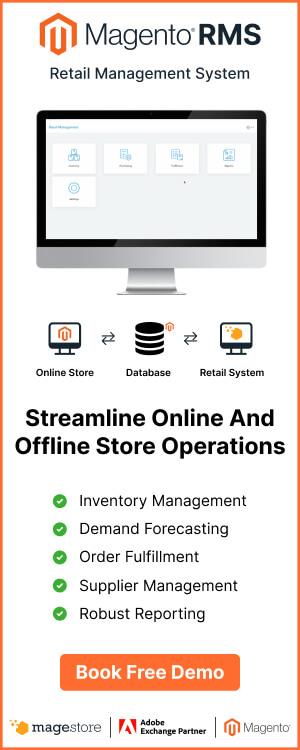Admit it, the reason why you are here is not only because you want to know about the definition of POS reconciliation. You may also be under the loss of more money without any reason. Do you feel like that, too?
If you are doing retail businesses, the most essential for your success is strong finance. You must have a thorough understanding of how money is being spent to make effective decisions about your budget.
That’s why you need the POS reconciliation accounting exactly like you need to breathe. By analyzing the transactions at the point of sale (POS), you can get deeper insights into your company’s finances.
Don’t tell me the word “POS” doesn’t make any sense to you. You need to know what is POS in order to continue with this article. Moreover, we’ll explore reconciliation accounting to see how it benefits retail businesses. Also, you know how you can use it to explain discrepancies in your accounts.
What is POS reconciliation?

While more and more retailers are adopting the definition of POS reconciliation, some don’t even know how crucial this term can be. In short, POS reconciliation is the accounting task of comparing two sets of records to see if the figures all match up. It helps ensure that your financial activity is properly recorded and the amounts are all accounted for.
But why, why must you have and must do a job related to POS reconciliation to stay on top of?
From many well-known websites, like Investopedia, they defined this action as “confirms whether the amount leaving an account is the same amount that is spent.” Vend even push far, thinking the “POS reconciliation is hands-down, one of the “must-do” jobs that every retailer should stay on top of.”
Commonly, people will keep internal records for their finances, and then compare those against the monthly statements from their financial institutions, such as those from their bank or credit card company.
With that, you can confirm if the amount of money you have spent is exactly that amount left your POS account. POS data is extremely important to give you these insights, but the work you need to do is called POS reconciliation. By that, retail businesses can achieve a measure of consistency and greater accuracy in their financial records.
5 Benefits of POS reconciliation
I bet that you don’t have much time as a retail business owner, to carry out a full financial analysis. Yes, that’s why you need the benefits of POS reconciliation.

1. Eliminate accounting errors
Even the best accountants are still human, and therefore no human makes no mistake. Especially when your business scales and the activity on your bank account increases, the errors will stack.
Moreover, you still need the POS data analysis to have a clear overview of your business. Whatever types of POS you are using, you need the POS reconciliation.
With a solid POS reconciliation process, you can catch any errors before they spiral out of control. Even if an error is an infrequent, honest mistake, it’s important to be vigilant so that it doesn’t continue to disrupt your records.
2. Ensure business deposits are always secure
Unchecked human errors can soon run you into trouble when it’s time to make deposits.
You may have regular direct debit payments set up to pay your suppliers. Imagine if the payments fail because there isn’t enough cash to cover it – that’s not going to impress your supplier or your bank. If you reconcile your accounts regularly, you’ll safeguard your business against such nasty surprises.
3. Simplify the process of paying bills
The life of a business owner is not easy, and having a few bills slip out of your mind is the fact. So, you need a method for the bill paying process to be easier.
By automating bills to debit on a schedule, the POS reconciliation gains you some stability with your cash flow. Also, you will not miss payments or go overdrawn if you don’t have enough money in the account at the right time.
That’s the power of POS reconciliation, as you protect yourself against this problem and ensure you can always pay your bills on time.
4. Save your business money
If you think you can easily handle the late payment fee, you are wrong. If you’re not careful about bookkeeping, you can only do it once or twice, but those charges can quickly add up.
Without an accountant, only 11% of small businesses believe they can be successful. You don’t know how much of a difference a POS reconciliation can help your business at the end of the year.
5. Help you identify unauthorized transactions
It is something common, but people refuse to say. Employee theft is the fact that every business in the US is facing, but has no solution to eliminate it. It costs them $50 million per year.
And then again, you need POS reconciliation to quickly identify any unwanted transactions and challenge unauthorized actions with the full facts in hand.
Explore solution: Most customizable & scalable POS for Magento merchants
4 Steps to do POS reconciliation
Okay, now you understand the benefits of the POS reconciliation, we are next to how to do it properly.
Step 1: Identify transactions that you can’t cross-reference
Before you start, you need to gather everything, your POS system knowledge, your bank statements and internal account register.
Take note of any bank deposits or payments that you can’t back up with other evidence. These may include uncleared checks, ATM charges, overdraft fees, or automated payments that have not yet been cleared by your bank.
Similarly, review your internal account records and highlight any payments that don’t show up on the bank statements. Subtract the subtotal of these items from the total balance on the bank statement.
Step 2: Verify incoming funds on both documents
Go through your internal records to check for credits and deposits, and then cross-reference them with your bank statement.
Make a note of any that are not yet confirmed by your bank, then add them to the balance on the statement.
The bank statement may display deposits that are not reflected in your own records. In these instances, add the entries to bring your own records up-to-date with the bank.
Step 3: Contact the bank for suspected errors
It doesn’t happen often, but the bank may have made a mistake. If you have conducted a thorough examination of the statements and your internal records and find anomalies that you can’t explain, contact your bank.
They can investigate and confirm if there has been an error. If so, it shouldn’t be hard for them to add or subtract the amount from your balance to correct the problem.
Step 4: Maintain a balanced set of books
With the reconciliation, your internal records and bank statements should now be aligned. Meaning, the balances on both are now the same.
It’s a smart move to make notes of any discrepancies or differences between your records and your bank account. This will be helpful for the next POS reconciliation.
Types of reconciliation in retail
To do POS reconciliation, you cannot only rely on transaction data on the POS itself. You need to compare the POS data to records from third parties as well. For better clarification, there 3 types of reconciliation in retail you have to know:
- Bank reconciliation: Checking POS transactions against bank records to identify errors or discrepancies.
- Vendor reconciliation: Comparing vendor invoices with goods/services received to ensure accurate charges and prevent overpayment.
- Customer reconciliation: Comparing the sales data recorded on the POS with the customer receipts to ensure that the amount charged to customers matches their actual purchases.
In a nutshell
We have gone through basic understandings of POS reconciliation and 4 main steps to implement this activity. While many retail businesses are reconciling their POS system at the end of the day, other large retailers that need to deal with a large number of orders per day, often reconcile their POS at least twice per day.
With Magestore all-in-one POS solution, POS reconciliation is no longer a tedious task. The point of sale allows business owners to see and export analytics and reporting to keep track of all transactions and get more insights into your business health. Discover the best-fit POS solution for Magento to seamlessly streamline store operations and elevate your business to new heights.














